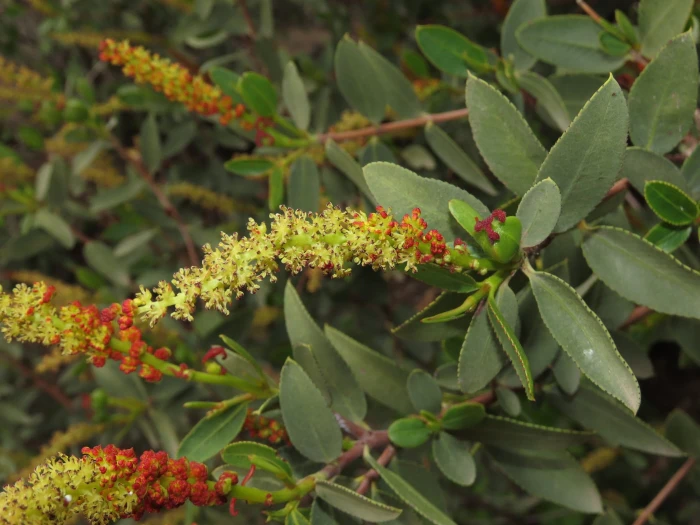Colliguay
(Colliguaja odorifera)
Colliguay (Colliguaja odorifera)
/
/

Nicolás Lavandero
CC BY 4.0
Image By:
Nicolás Lavandero
Recorded By:
Copyright:
CC BY 4.0
Copyright Notice:
Photo by: Nicolás Lavandero | License Type: CC BY 4.0 | License URL: http://creativecommons.org/licenses/by/4.0/ | Rights Holder: Nicolás Lavandero | Publisher: iNaturalist | Date Created: 2021-09-19T11:31:21-07:00 |

























Estimated Native Range
Climate Requirements
| • Precipitation | 16" - 20" |
| • High Temp. | 76°F - 85°F |
| • Low Temp. | 35°F - 44°F |
Summary
Colliguaja odorifera, commonly known as Colliguay, is a lignotuberous shrub native to the Chilean matorral, a Mediterranean-type shrubland found in central Chile. It is particularly prevalent in areas such as La Campana National Park and Cerro La Campana, where it thrives on both south and north-facing slopes, showcasing its adaptability to varying air and soil moisture levels. Colliguay typically coexists with the endangered Chilean Wine Palm (Jubaea chilensis) and other native flora, contributing to the region’s biodiversity.
Colliguaja odorifera is recognized for its resilience and adaptability, making it a suitable choice for xeriscaping and restoration projects in Mediterranean climates. It is valued for its aromatic properties and has been used traditionally for medicinal purposes. The shrub’s ability to thrive in different environmental conditions, including poor soils and drought, makes it a low-maintenance option for gardeners. In cultivation, it requires minimal water once established and prefers well-drained soils with full sun to part shade exposure. While not widely known for ornamental use, its small, inconspicuous flowers and the dense foliage it provides can be beneficial for creating natural screens or hedges in dry landscapes.CC BY-SA 4.0
Colliguaja odorifera is recognized for its resilience and adaptability, making it a suitable choice for xeriscaping and restoration projects in Mediterranean climates. It is valued for its aromatic properties and has been used traditionally for medicinal purposes. The shrub’s ability to thrive in different environmental conditions, including poor soils and drought, makes it a low-maintenance option for gardeners. In cultivation, it requires minimal water once established and prefers well-drained soils with full sun to part shade exposure. While not widely known for ornamental use, its small, inconspicuous flowers and the dense foliage it provides can be beneficial for creating natural screens or hedges in dry landscapes.CC BY-SA 4.0
Plant Description
- Plant Type: Shrub
- Height: 7-13 feet
- Width: 4-6 feet
- Growth Rate: Moderate
- Flower Color: White
- Flowering Season: Spring
- Leaf Retention: Evergreen
Growth Requirements
- Sun: Full Sun
- Water: Low
- Drainage: Medium, Fast
Common Uses
Drought Tolerant, Erosion Control, Low Maintenance
Natural Habitat
Native to the Chilean matorral, particularly in central Chile’s Mediterranean-type shrubland environments
Other Names
Common Names: Palo amarillo, Fuinque
Scientific Names: Colliguaja odorifera, Colliguaja obtusa, Colliguaja triquetra, Croton colliguaja
GBIF Accepted Name: Colliguaja odorifera